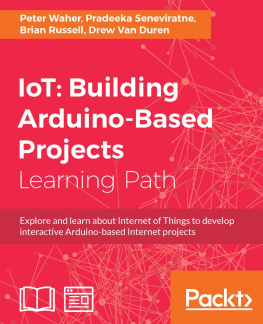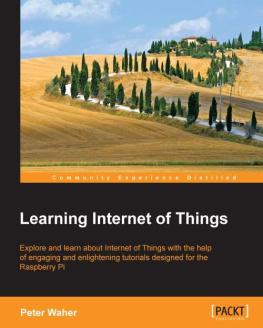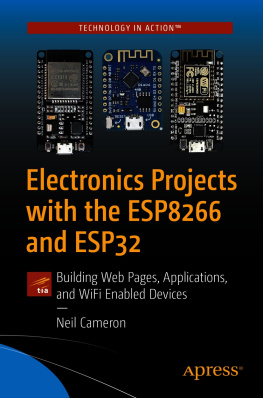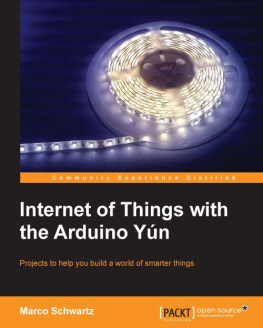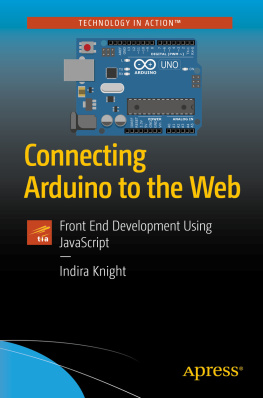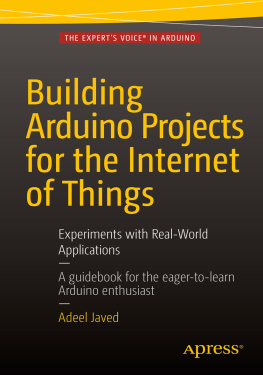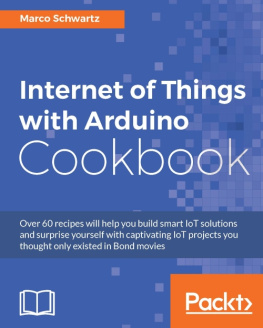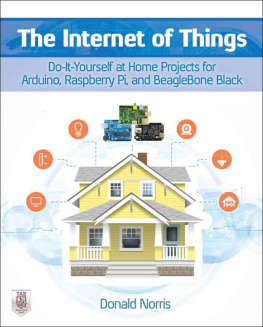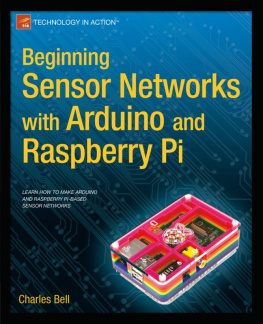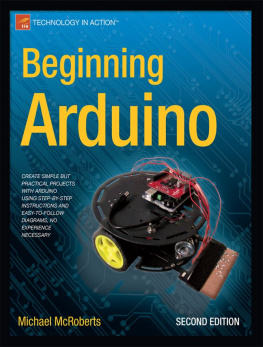Peter Waher - IoT: Building Arduino-Based Projects
Here you can read online Peter Waher - IoT: Building Arduino-Based Projects full text of the book (entire story) in english for free. Download pdf and epub, get meaning, cover and reviews about this ebook. year: 2016, publisher: Packt Publishing, genre: Computer. Description of the work, (preface) as well as reviews are available. Best literature library LitArk.com created for fans of good reading and offers a wide selection of genres:
Romance novel
Science fiction
Adventure
Detective
Science
History
Home and family
Prose
Art
Politics
Computer
Non-fiction
Religion
Business
Children
Humor
Choose a favorite category and find really read worthwhile books. Enjoy immersion in the world of imagination, feel the emotions of the characters or learn something new for yourself, make an fascinating discovery.
- Book:IoT: Building Arduino-Based Projects
- Author:
- Publisher:Packt Publishing
- Genre:
- Year:2016
- Rating:3 / 5
- Favourites:Add to favourites
- Your mark:
IoT: Building Arduino-Based Projects: summary, description and annotation
We offer to read an annotation, description, summary or preface (depends on what the author of the book "IoT: Building Arduino-Based Projects" wrote himself). If you haven't found the necessary information about the book — write in the comments, we will try to find it.
- Learn the capabilities and differences between popular protocols and communication patterns and how they can be used, and should not be used, to create secure and interoperable services and things
- Build Internet-based Arduino devices to make your home feel more secure
- Learn to protect cyber-physical systems and utilize forensic data analysis to beat vulnerabilities in your IoT ecosystem
- Learn best practices to secure your data from device to the cloud
If youre a developer or electronics engineer who is curious about Internet of Things, then this is the course for you. A rudimentary understanding of electronics, Raspberry Pi, or similar credit-card sized computers, and some programming experience using managed code such as C# or Java will be helpful. Business analysts and managers will also find this course useful.
What You Will Learn- Know the capabilities and limitations of the HTTP, UPnP, CoAP, MQTT, and XMPP protocols
- Use important communication patterns such as request/respond, publish/subscribe, event subscription, asynchronous messaging, and multicasting patterns
- Build a portable Wi-fisignal strength sensor to give haptic feedback about signal strength to the user
- Measure water flow speed and volume with liquid flow sensors and record real-time readings
- Secure your home with motion-activated Arduino security cameras and upload images to the cloud
- Implement real-time data logging of a solar panel voltage with Arduino cloud connectors
- Track locations with GPS and upload location data to the cloud
- Control infrared-enabled devices with IR remote and Arduino
- Use systems security engineering and Privacy by Design principles to design a secure IoT ecosystem
The IoT: Building Arduino-Based Projects course will take you on a journey to become an expert in the use of IoT by developing a set of projects and will guide you through securing your IoT environment.
In the first module, Learning Internet of Things, you will learn how protocols and patterns can put limitations on network topology. You will also learn how the existing protocols, communication patterns, architectures, and security issues are important to Internet of Things.
The second module, Internet of Things with Arduino Blueprints, provides eight projects that will allow devices to communicate with each other, access information over the Internet, store and retrieve data, and interact with userscreating smart, pervasive, and always-connected environments.
It has become critical to ensure that cyber security threats are kept to a minimum when implementing new IoT services and solutions. Thus, our third module, Practical Internet of Things Security provides a set of guidelines to architect and deploy a secure IoT in your enterprise. The aim is to showcase how IoT is implemented in early adopting industries.
Peter Waher: author's other books
Who wrote IoT: Building Arduino-Based Projects? Find out the surname, the name of the author of the book and a list of all author's works by series.

